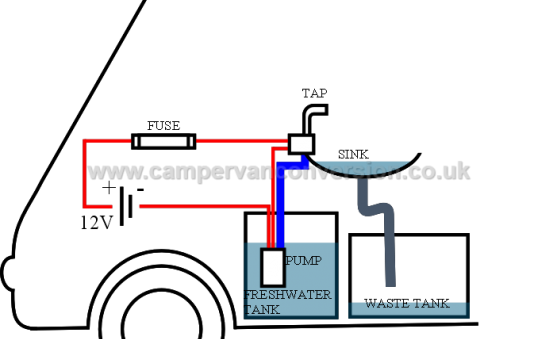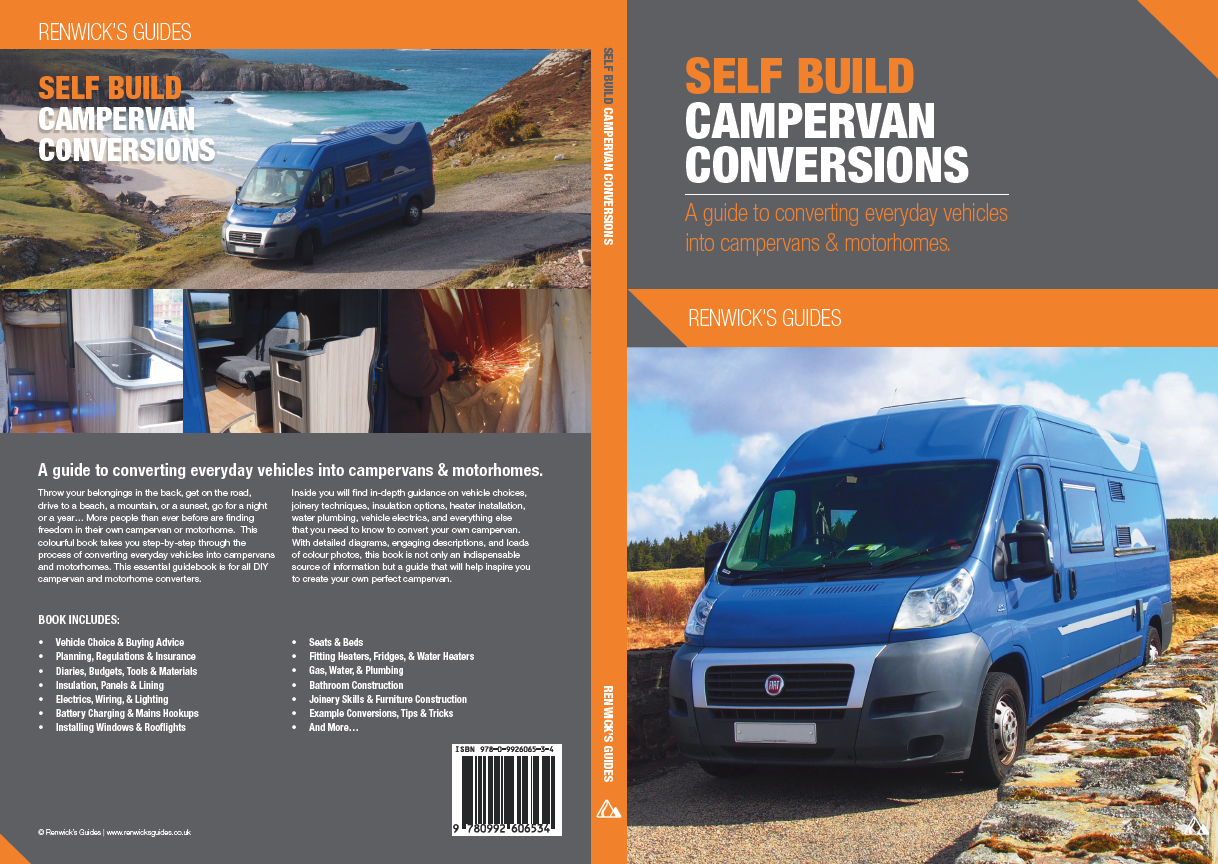5. Water System Electrics
Just like the plumbing, the best approach here is to think of your electrical system in terms of individual wires. You will need to connect from your leisure battery to your water system via an appropriate fuse. In simple terms each component will need to have its own 'circuit' running from a power supply, to a switch, to the component and to earth. Earth can be a bolt into the van, you do not need to connect back to the battery.
Many components, for example microswitch raps and submersible pumps, come with a length of electrical cable preattached. All you have to do is add a section of wire between your components, we find an easy way to get a good connection is by using spade connectors. Be sure to insulate your cable joins so no metal is exposed in your finished circuit.
Before you connect to the battery to power the circuit, ensure that all of your cables are insulated and connected, and all of your components are in the correct order. In a simple microswitch tap system the wire will run from the fusebox, to the tap, from the tap to the pump, and from the pump to earth. Turning the tap on will complete the circuit and turn on the pump, which will pump water through your hose and into your sink.








